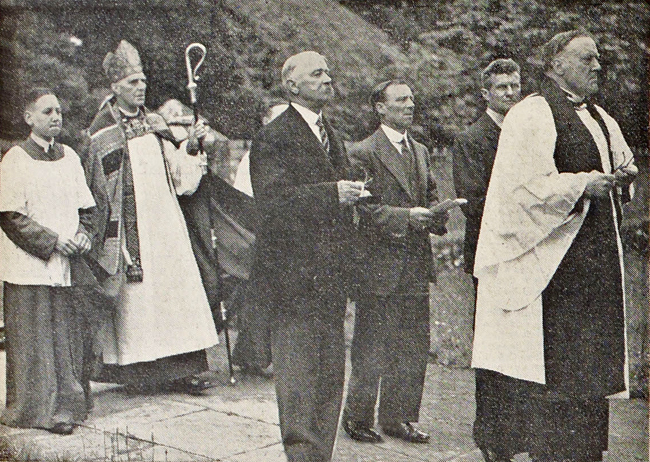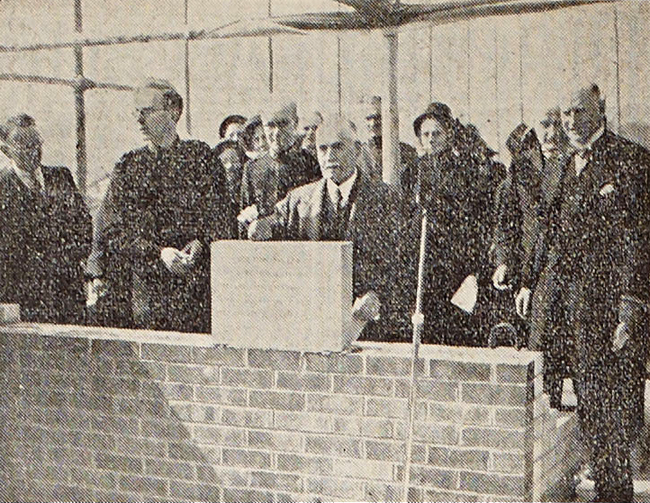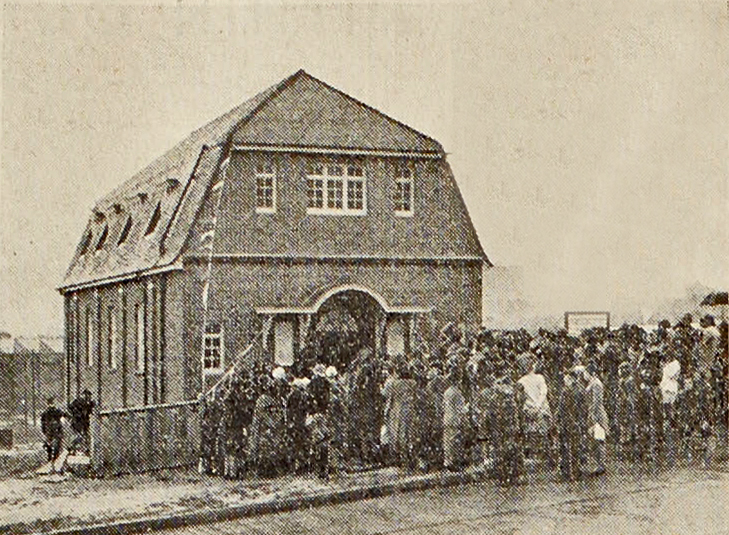
Churches - Bevendean History Project

Newspaper Articles Local Churches 1939

Brighton & Hove Herald – 1 July 1939
VILLAGE CHURCHES NEAR BRIGHTON
New Incumbent for Stanmer and Falmer
Both churches, considering their close proximity to urban areas, enjoy particularly peaceful and pleasant surroundings, and are far from the madding crowd of motor traffic which throngs the Lewes-Brighton road on Sundays. Nor are the churches themselves without their charm, although both are relatively modern and were almost or entirely rebuilt only a century or so ago as a result of the munificence of the then Earl of Chichester.
NEW RECTOR OF STANMER
The
institution and induction of the Rev. Joseph Hanbury Wykes Ashdowne,
now assistant priest of St. Mark's Church, Kemp Town, as rector of
Stanmer with Falmer will be performed by the Bishop of Lewes (the Right
Rev. Hugh Hordern) and the Archdeacon of Lewes (the Ven. F. H. D.
Smythe) on Saturday July 8, at 3 p.m., in Stanmer Parish Church.Brighton & Hove Herald – 1 July 1939
New Incumbent for Stanmer and Falmer
Visitors
to Brighton who are wise enough to regard the week-end in its dual
aspect as an Opportunity of seeking "those things which are requisite
and necessary, as well for the body as the soul" might well do worse
(writes a Church correspondent) than combine a Sunday walk with
attendance at one or other of the churches of Stanmer and Falmer, to
which the Rev. J. H. W. Ashdowne, assistant curate for the past three
years at St. Mark's, Brighton, has just been instituted as Incumbent in
succession to the Rev. P. S. Morgan.


The Bishop of Lewes in procession to Stanmer Church on Saturday
for the induction of the new incumbent, the Rev. J. H. W. Ashdowne
for the induction of the new incumbent, the Rev. J. H. W. Ashdowne
Both churches, considering their close proximity to urban areas, enjoy particularly peaceful and pleasant surroundings, and are far from the madding crowd of motor traffic which throngs the Lewes-Brighton road on Sundays. Nor are the churches themselves without their charm, although both are relatively modern and were almost or entirely rebuilt only a century or so ago as a result of the munificence of the then Earl of Chichester.
Great Services
No
one, indeed, can visit either church without being reminded of the
great services to State and Church alike rendered by the various
members of the Pelham family who have resided at Stanmer Place. The
east window of Stanmer Church, for instance, reminds the visitor of the
long career of the third earl, who was Lord Lieutenant of the county
and chairman of Quarter Sessions for over half a century preceding his
death in 1886, and who was also chairman of the Church Missionary
Society and identified with numerous good causes throughout his long
life.
Subsequent holders of the title have been prominent in rendering good services to those among whom they dwelt in many and various capacities, and the present earl (as patron of the united benefice) and his sister were among those present at Mr Ashdowne's Induction.
Falmer churchyard, despite' its idyllic situation, has tragic associations— though no doubt forgotten by the present generation—for it was the scene in the eighties of last century of the suicide (after he had attended the afternoon service) of a man wanted by the London police for a murderous attack on a Hatton-garden diamond merchant.
Brighton & Hove Herald – 15 July 1939
Subsequent holders of the title have been prominent in rendering good services to those among whom they dwelt in many and various capacities, and the present earl (as patron of the united benefice) and his sister were among those present at Mr Ashdowne's Induction.
Falmer churchyard, despite' its idyllic situation, has tragic associations— though no doubt forgotten by the present generation—for it was the scene in the eighties of last century of the suicide (after he had attended the afternoon service) of a man wanted by the London police for a murderous attack on a Hatton-garden diamond merchant.
Brighton & Hove Herald – 15 July 1939

Mr Henry James Salvage (centre) laying the foundation stone on Saturday of the new Salvation Army building in Moulsecombe-way, East Moulsecombe.
Brighton & Hove Herald – 15 July 1939
Reinforcements For The Church In Moulsecombe
Salvation Army Building Opened
The
Church of England, which has been waging a tremendous and often rather
lonely campaign on behalf of the cause religion in the big garden
suburb of Moulsecombe, now has the powerful aid of the Salvation Army
“shock troops” to help in the battle against indifference.Salvation Army Building Opened
A beautiful new hall, which lies only a short distance from the Church of England hall at East Moulsecombe has become the local headquarters of the salvation army, and little lies between the two buildings apart from a couple of factories.
From the two halls will be carried on a range of good works for which the need has been increased in these difficult times when the presence of “refugees” has exaggerated many long-standing problems.
The provision of the new hall – which was open on Saturday afternoon in the presence of the Mayor and Mayoress of Brighton (Councillor J. Talbot Nanson and Mrs D. Scott Prime) – has been rendered possible through a generous gift by Mr H. J. Savage, a well-known local resident who is a warm admirer of the Salvation Army’s work, assisted by a grant from the Salvation Army headquarters.
The building, which is of admirably situated for carrying on the kind of mission at which the Salvation Army excels, was designed by Salvationist, Mr D. Newton Padgham, and was built by another salvationist, Mr A. Albritt deputy bandmaster of the Brighton Congress Hall band.
Major and Mrs E. Nicholson, who are in charge of the Brighton Congress Hall and the branch established in York Hill, will supervise the work of Moulsecombe, and will be assisted by that notable Salvationist, Major Carter, who has nominally retired after her heavy work in the Edward Street district, Young People’s Sergeant major O’Dell, Adjutant Craig, Sergeant Olive Sherrin, and some Army cadets who have been evacuated from London.

The new Salvation Army Hall in Moulsecombe Way was open on Saturday by Colonel Rushton.
A Big Crowd
Capacious
as is the Hall, it was some time before the big crowd which had come
for the ceremony could be found accommodation in the building, and when
the task was completed so far as it could be, the Hall was closely
packed. Even the Congress Hall band was short of space, but the
musicians were not lacking in melody and gave a characteristic stimulus
to a memorable occasion.The speech of the Mayor, who told the company that he attended Salvation Army band concerts in his youth in London, showed a good deal of close knowledge of the Salvation Army were about. He referred to the great achievements of the members of the Booth family and to the new General-designate, Commissioner Carpenter.
Mr Savage, who had an enthusiastic reception, spoke of the growth of the new housing estates around Brighton, and the widespread opportunities now be offered the service to all branches of the Christian church.
In the regrettable absence through illness of the British Commissioner (Commissioner Charles T. Rich, formerly of Brighton) the ceremony of dedication was carried out by Colonel Walter Rushton (national secretary), who spoke of Commissioner Rich’s keen interest in the new venture of Moulsecombe.
Those who took part in the service included the Rev. B. C. Shildrick, B.A. (Honorary secretary of the Brighton and Hove Free Church Council), Brigadier Edwards (divisional commander), and Major Harris (of divisional headquarters).
Leading officers of the army who were present included Brigadier Calvert (property secretary), the Lieut.-Colonel Thomas and Lieut.-Colonel Spencer.
Brighton & Hove Herald – 14 October 1939
